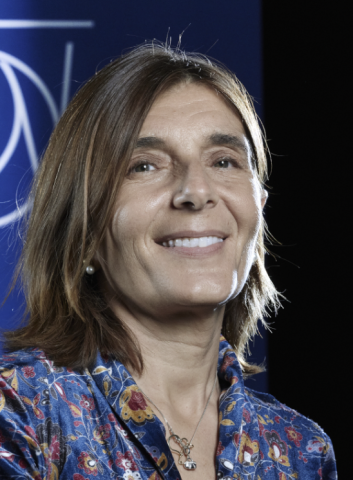In the logical sequence from collisions to a scientific breakthrough, computing comes last. But definitely not least. At CERN, computing is a distributed effort. Most of the activities that are necessary for research work to happen – such as data storage, data sharing, data access and security, data architecture – are directly designed and managed within the CERN IT department. However, huge expertise in computing is also to be found in the scientific collaborations. Interactions between experts, regardless of which department or collaboration they come from, are continuous, and successful projects are often created and managed by mixed teams.
A recent example is the ALICE O2 project. ALICE’s graphics processing unit (GPU)-based online data processing has the highest data recording requirement of all experiments. To address this challenge, experts from the IT department and members of the ALICE collaboration jointly developed a wholly novel approach whereby data from ALICE is sent directly to the CERN Data Centre in Meyrin, five kilometres away, through high-speed fibre-optic links. The O2 storage system is designed to be cost-efficient and highly redundant to keep data accessible even in the event of unexpected disruptions or hardware failures. The large-scale storage solution demonstrated its effectiveness last autumn, during the LHC ion run, and remains the largest disk storage system ever established in the Data Centre.
The Organization’s data management strategy relies on the high standards of the two CERN Data Centres – one in Meyrin and the second, recently inaugurated, in Prévessin – and goes much beyond the CERN campus. Thanks to its network of around 160 centres distributed across 40 countries, the Worldwide LHC Computing Grid (WLCG) makes the data deluge produced by the experiments available to the wide community of scientists distributed in all the collaborating institutes around the world. This would not be possible without the thousands of innovative solutions that the community has developed over the years.
Like for the Laboratory’s other activities, collaboration is also key for the IT department. It is here that the innovative public–private partnership of CERN openlab was born, over 20 years ago. Its new phase, which kicked off just a couple of weeks ago, is designed to attract new collaborations and to keep CERN openlab at the forefront of new technologies, in order to anticipate the needs of the research field and meet future challenges, including data storage at the exascale, development of innovative algorithms based on artificial intelligence and quantum computing.
We strive constantly for innovation. Here, the best talents that the Organization attracts work on technologies that will shape the future of computing, not only for science but also for society. The Quantum Technology Initiative, founded in 2018 to establish a comprehensive R&D programme in the field of quantum technologies, has evolved to also encompass a societal arm, the newly established Open Quantum Institute. The Institute will foster pioneering technological solutions that will benefit society while helping to avoid the creation of a new technological gap in our world.
We believe that the only way to shape the future is to do it in a sustainable and inclusive way. Access to science and technology must remain open to all, the cutting-edge tools that we develop must be shared with society, and we have to keep a keen eye on their environmental impact. To fulfil our challenging mission and to carry out our impactful projects, we will keep investing in attracting the best talents who believe in and share our objectives.

